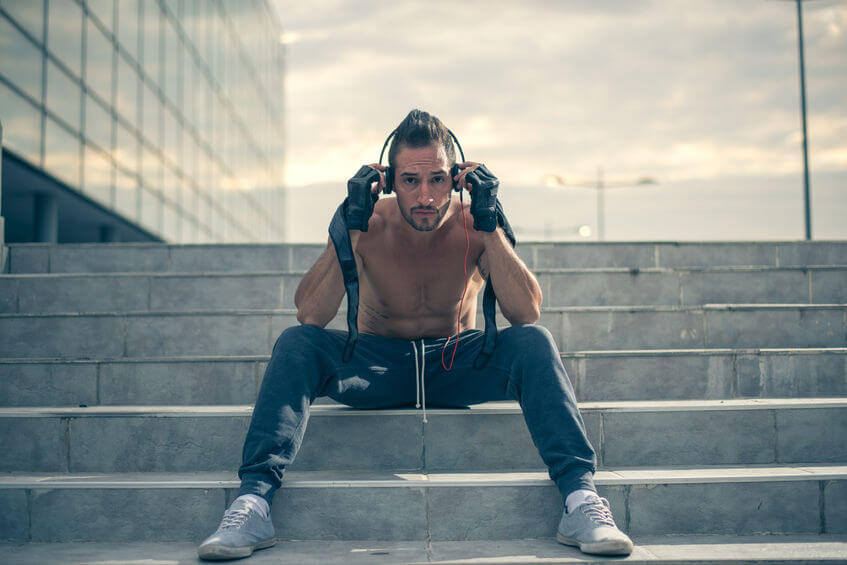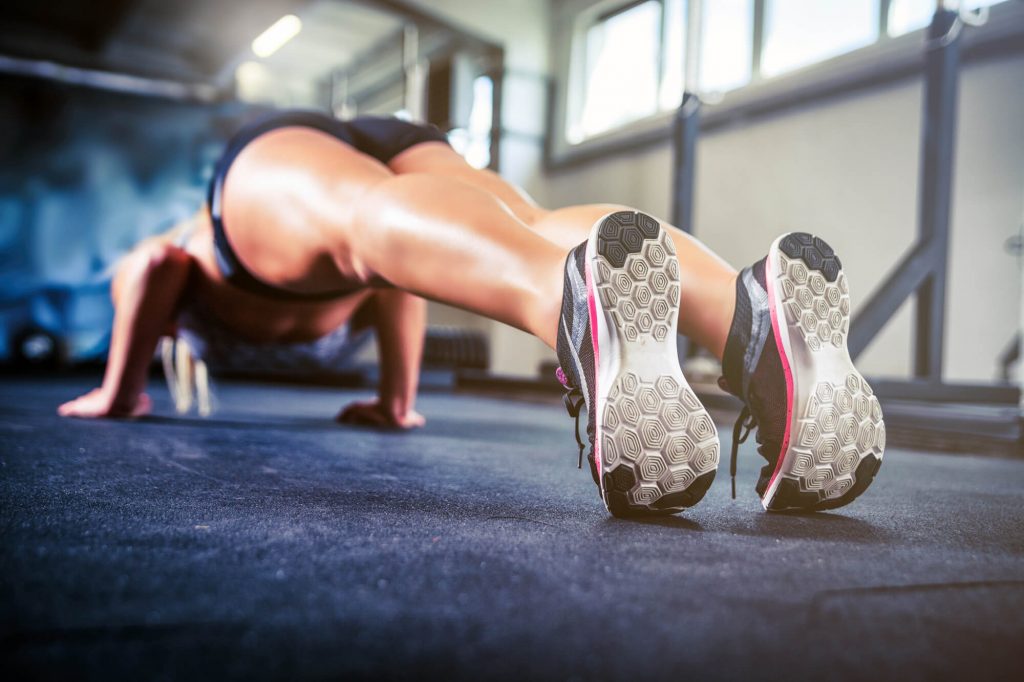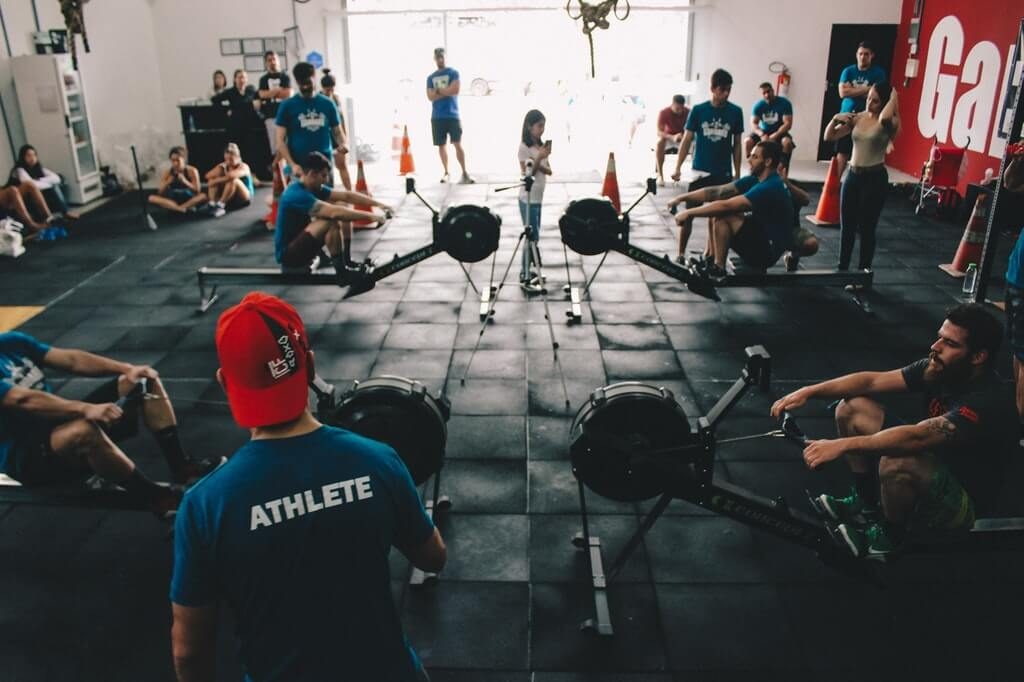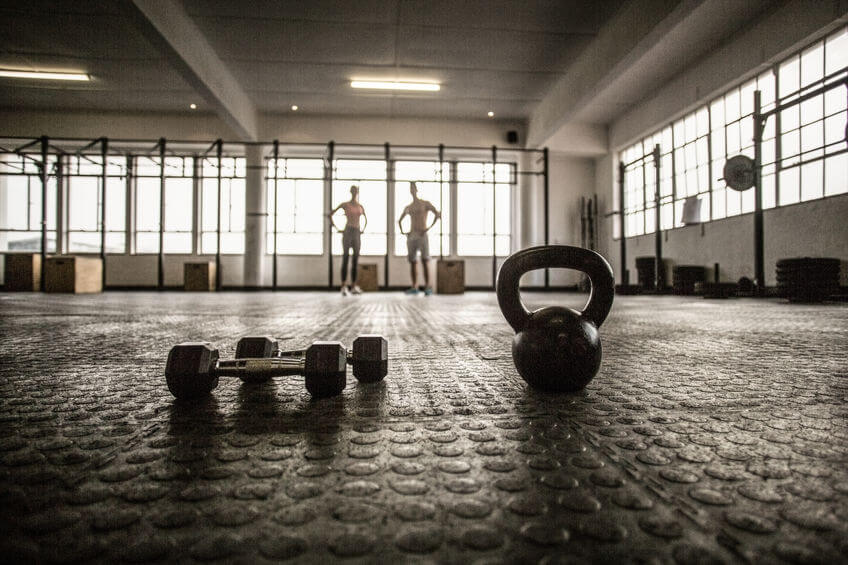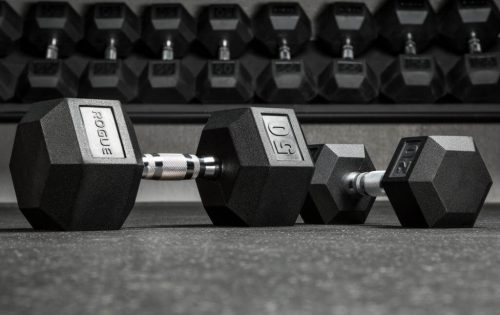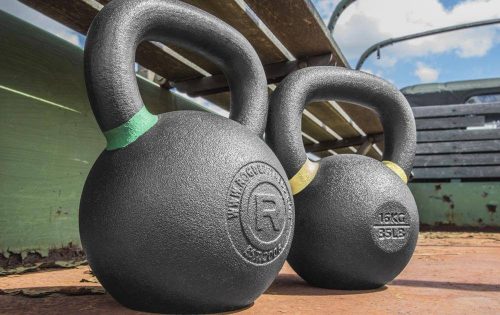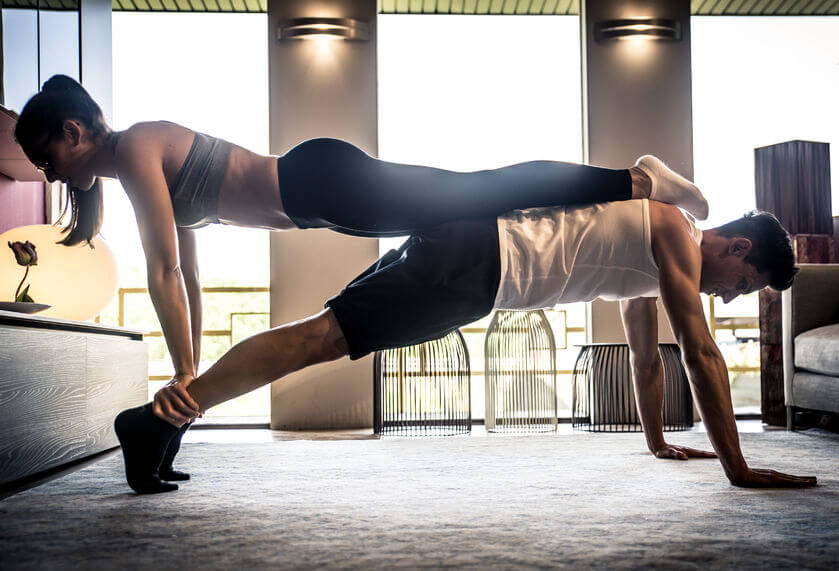High-Intensity Interval Training 101: Complete Guide & Best HIIT Workouts
There has been a ton of discussion in the fitness community lately about HIIT workouts and the benefits of interval training.
More than just another fad, HIIT promotes rapid fat loss by creating a shortage of oxygen in the body that burns calories remarkably effectively.
But why is this so important? And what other benefits does this type of training provide?
Let’s find out!
Contents
- What Exactly is HIIT?
- What are the Benefits and How Can I Create a Workout to Maximize Them?
- Are There Any Drawbacks to HIIT Training?
- Tabata vs HIIT: How are They the Same? How are They Different?
- Crossfit vs HIIT: How are They the Same? How are They Different?
- HIIT Workouts and Exercises
- HIIT Equipment
- FAQ About HIIT
- How often should I do HIIT workouts?
- What kind of exercise is HIIT?
- Is HIIT good for fat loss?
- Does HIIT build muscle?
- What do I eat before a HIIT workout?
- What do I eat after a HIIT workout?
- Is HIIT good for your heart?
- When is the best time of day for HIIT?
- How high should I keep my heart rate when doing HIIT?
- Summary
What Exactly is HIIT?
HIIT training, or high intensity interval training, is a method of training that involves short bursts of maximum output and intensity over a period of 20-30 minutes.
When done properly, HIIT can improve your metabolism, help you lose body fat, add lean muscle, burn fat, and improve cardiovascular health.
There is no special equipment needed, and almost all of the workouts can be done anywhere.
The most important thing to remember when deciding to add high intensity interval training to your workout schedule is hiding in plain sight – in fact, it’s right in the name!
HIGH INTENSITY.
HIIT is all about pushing yourself to the limit.
You need to be willing to sustain maximum intensity for as long as possible to truly see the greatest benefits to body and mind.
What are the Benefits and How Can I Create a Workout to Maximize Them?
As mentioned in the previous paragraph, HIIT has a ton of great benefits that reward those who are willing to put in the work.
Let’s take an in-depth look at some of them right now;
- HIIT burns many calories in only a short amount of time – when compared to biking, running, or weightlifting, HIIT burns much more calories despite the workout typically lasting 20-30 minutes. One study showed that HIIT burns 25-30% more calories than running or biking for the same period of time.
- Fat Loss – As we learned in point #1, HIIT burns a lot of calories quite rapidly. Of course, this translates to fat loss. Studies show that participating in high intensity interval training three times a week for just 20 minutes each session resulted in a loss of 2 kg (4,4 lbs) of body fat after three months.
- Improved Oxygen Consumption – People have used endurance training to improve oxygen consumption for a very long time. Exercises such as running, cycling, and swimming have shown to improve cardiovascular and lung capacity when done over a long period of time. However, it is now apparent that HIIT can provide the similar benefits in a much shorter time span. One study showed that HIIT training done four times a week for twenty minutes improved oxygen consumption by 9%. However, to achieve the same 9% increase by running or biking, 40 minutes per day four times a week was needed – or double the amount of time!
- Increased Metabolic Rate – As vital as it is to burn calories during a workout to fuel fat loss, it is equally important that your body improves its metabolic rate to help you keep burning fat once a training session is over. It has been shown that HIIT training increases your metabolism for hours after a training session – a four to five-minute HIIT sprint workout increases metabolic rate for 24 hours as much as a thirty minute run! Who doesn’t love additional calories being burned AFTER a workout?
- Lean Muscle Growth – For those who begin HIIT training after being less active for a long period of time, it seems extremely clear that on top of burning fat, calories, and promoting weight loss, HIIT also adds muscle to the legs and abdominals. However, for those who are already quite active or have engaged in high intensity interval training for extended periods previously, the same muscle growth isn’t seen (source).
It is important to note that research shows there are many other benefits to HIIT as well: reduction in blood sugar, decrease in blood pressure, slower heart rate, etc.
However, almost all studies show that the benefits of HIIT seem to be most apparent in overweight or obese individuals.
That isn’t to say that other body types can’t benefit from HIIT too, it’s just that the results will be less dramatic.
Are There Any Drawbacks to HIIT Training?
Of course, there are also some cons associated with high intensity interval training as well.
First of all, HIIT may cause dizziness for some participants due to the rapid change in blood pressure when alternating between rest and high intensity.
Secondly, if done incorrectly, HIIT may cause muscle damage due to the large amount of stress put on the body by consistent high intensity exercises.
It is extremely important to remember to use proper form during a HIIT workout, as many people struggle to do this when moving at fast speeds or when under extreme stress due to such high intensity or exertion.
Tabata vs HIIT: How are They the Same? How are They Different?
There are many misconceptions and much confusion surrounding high intensity and Tabata, which is another form of exercise that involves maximum effort over short time periods and minimal rest.
They do share many similarities – especially in terms of benefits (fat loss, increased endurance and speed, weight loss, etc.).
However, Tabata is more accurately a specific TYPE of HIIT – it falls under the wide umbrella of high intensity interval training, just with a very specific formula.
Tabata was created by researcher Izumi Tabata in 1996. In one particular study, Tabata found that athletes increased their lung capacity and metabolic rate after following a specific workout that consists of eight rounds of exactly twenty seconds at maximum effort followed by ten seconds of rest.
He also found that when this program was followed five days a week for six weeks, the benefits from Tabata were much greater than those who participated in longer, less intense workouts.
Crossfit vs HIIT: How are They the Same? How are They Different?
While both CrossFit and HIIT are interval-based workouts, the exercises themselves are sometimes different.
HIIT involves anaerobic exercise, which provides less muscle-growth/strength benefits but remarkable fat loss results on top of an increase in cardiovascular fitness.
They are almost always cardio-centric, while Crossfit is traditionally more of a mix between HIIT and weightlifting.
The importance of intervals is also much different in Crossfit than in HIIT – although there is certainly less downtime between sets (if any) than in traditional bodybuilding or weightlifting.
HIIT Workouts and Exercises
Now that we’ve gone over some of the background behind HIIT training and discussed the wide-range of benefits this type of exercise offers, it’s time to break down some actual workouts.
This guide will cover many different HIIT programs while also providing a brief analysis of why each workout is beneficial.
No matter whether you are training at home, in the gym, or are a beginner or expert, each of these circuits will have something to offer everyone – it certainly is a great list of some of the best HIIT exercises you can do!
15 Minute HIIT Workout
This workout is perfect for people who are always on the go with family, work, or any other time commitments.
It also doesn’t require any equipment, so it can be done on a lunch break, in a hotel, or anywhere else you might find yourself without immediate access to a gym.
There are 12 exercises total, with each exercise requiring two sets. Tabata intervals are also utilized (20 seconds on, 10 seconds rest) which is perfect for getting 100-200 calories burned in a short amount of time.
Warm Up : 3 Minutes (30 Seconds Each)
- Side Arm Swing
- High Knee March
- Squat Circles
- Boxer Shuffle
- Up and Outs
- Jumping Jacks
Workout: 12 Minutes (20 seconds on, 10 seconds off, 2 sets per exercise)
- Pop Squat
- High Knees
- Walk Downs
- Burpee
- Lateral Jumps
- Star Jumps
- REST
- Plank to Push Up
- Jumping Lunges
- Jumping Jack
- Thigh Slap Jumps
- Mountain Climbers
- Squat Jack
Here is a video that goes over each specific movement and breaks everything down in much further detail:
30 Minute HIIT Workout
Much like the 15-minute HIIT workout, this particular series of exercises can be done without needing any special equipment – although some may find a mat helpful.
It primarily focuses on core strength and utilizes many great bodyweight-only moves/positions that promote muscle growth and improve cardiovascular health.
There are five sets, each of which are followed by 30 seconds of rest.
Each exercise is performed for 30 seconds and is then immediately followed by 30 seconds of Jumping Jacks.
Set 1:
- Floor Touch Squat
- Wide-to-Narrow Push Up
- Tap Floor, Squat Jump
- Full Tuck Crunch
- Rest
Set 2:
- Forward and Backward Lunge
- Tricep Dip and Hip Lift
- Kneel to High Skip
- Bicycle Crunch
- Rest
Set 3:
- Bridge Scissor
- Swimming Plank
- Diagonal Squat Thrust
- Toe Touch Beetle Crunch
- Rest
Set 4:
- Lateral Lunge to Knee Dive
- Inverted Push Up
- Skater with Single-Leg Squat
- Vertical Leg Lift
- Rest
Set 5:
- Plank Walkout and Punch
- Skydiver
- Tick-Tock Squat Thrust
- Rock-Up to Single-Knee
- Rest
This video does a wonderful job breaking down each exercise and gives great visual examples of each movement – the trainers even give some really useful nutritional advice during the workout!
Fat Burning Cardio-Specific HIIT Workout
Although this workout is a little bit longer than the previous two examples listed above, it is still a fantastic way to quickly burn 300-400 calories in just 35-40 minutes.
It is definitely one of the best HIIT workouts for weight loss, as the exercises that make up this particular circuit are much more cardio focused while still toning the entire body.
It is also one of the best HIIT cardio workouts – your heart will be pumping the entire time! No equipment necessary, so feel free to fire this one up from anywhere.
Warm Up Cardio: 25 seconds per interval
- Jog in Place
- Swing + Step
- 3 Torso Twists + Knee
- Standing Pike
- Warrior Jacks
- Toe Touch Circles
- Butt Kickers
- Squats
- Long Lunges
- Other Side
- Slow Burpee
- Up & Over Hops
- Up & Out Jacks
- Plyo Side Lunges
Workout: 20 Seconds on, 10 seconds rest, x 3 per exercise
- Jump Squat Front Kick
- Push Ups
- Jumping Lunge
- Skip Jump
- X Burpee
Water Break
- Squat Jacks
- Heel Click Drop + Step
- High Knees
- Burpee + Side Kick
- Tall Plank Leg Lifts
- Squat Drop + Ankle Tap (alternating sides)
- Broad Jump Forwad + 3 Squatted Steps Back
- 2 Runner Drops
- Lateral Jump Squat Jack
Cool Down and Stretch
HIIT Dumbbell Workout
This workout combines the best HIIT exercises for abs with the best HIIT core workout possible – and the results are fantastic, trust me!
Taking between 20-30 minutes, this HIIT workout requires a light to medium weighted dumbbell for each movement.
It is a great way to tone and sculpt muscle while also getting your heart rate up and improving cardiovascular health.
Each exercise should be done for one minute – after completing all six, take a 90 second rest and repeat the entire circuit 2-3 more times depending on your fitness level.
Pulse Squat into Curtsy Lunge
Stand straight up and place your arms by your sides. With dumbbells in each hand, bring the weights up to shoulder level in front of your torso, then squat until your knees are at 90 degrees.
After pausing momentarily at the bottom, start to stand back up, bringing your left leg behind you and to the right of your right knee.
Return to the start position and switch legs during the lunge. Alternate legs for 60 seconds.
V-Sit with Chest Fly
With a light dumbbell in each hand, sit on the ground in a tabletop position: chest and head up looking forward, knees bent in front of you with the legs extended.
Keeping good posture in mind, engage your torso and move your arms into an open position with palms facing each other.
Keep your core engaged and extend arms in an outward direction at shoulder level.
Return to the start position and repeat for 60 seconds.
Push-Up to Single Arm Front Raise
Start in a push-up position with dumbbells gripped in hands underneath your shoulders.
Do a push-up – with elbows glued to your sides – before extending your left arm straight up to shoulder-level in a frontwards motion.
Switch sides and then repeat for 60 seconds.
Star Jack with Single Dumbbell
Hold a dumbbell horizontally with both hands in front of your chest and your elbows bent.
While bending your knees, perform a jumping jack motion while keeping both hands on the sides of the dumbbell and directing it straight overhead.
Return to original starting position and continue movement for 60 seconds.
Row with Tricep Extension
Start in a plank position with arms straight out and hands gripping two separate dumbbells on the ground.
Engage your core and pull your right elbow straight up to shoulder level, pause, and then extended your arm directly behind you. Reverse the steps until both hands are back on the ground, body in original start position.
Repeat with other arm before alternating for 60 seconds.
Bridge with Chest Press
While lying flat on the floor with knees bent and your feet flat, hold a dumbbell in each hand while bending your elbows by your sides at shoulder-level.
Lift your hips towards the ceiling while keeping your core engaged and head touching the floor.
Push your arms straight up, pausing and the top before gradually returning to the start position – remember to keep your hips off the floor for the entire 60 seconds.
After you’ve done this exercise for a while, repeat the same movements while taking one foot off the floor at a time while performing the chest press.
Check out this resource: https://furthermore.equinox.com/dumbbell
HIIT Equipment
There are many different pieces of exercise equipment that can take your HIIT workouts to the next level.
From dumbbells, kettlebells, workout shoes, mats, cardio machines, and even iPhone/Android apps, this next section will cover some of the best products on the market today!
Rogue Rubber Hex Dumbbells
Review: Rogue rubber hex dumbbells are perfect for a wide variety of different exercises that are typically needed for many HIIT workouts, including the one outlined above.
This particular product from Rogue is sold in pairs – they come in weights ranging from 2.5 to 125 lbs. The rubber encased heads really limit excess noise while also preventing wear and tear.
The chrome handle is also very comfortable and ergonomically designed to help promote a strong, safe grip.
Pros
- Ergonomically designed chrome handle.
- Wide variety of different weights available.
- Rubber heads minimize noise and promote a long life.
Cons
- Rubber odor can be quite strong.
Takeaway
A great addition to any HIIT program that requires the use of weights or dumbbells for some of the exercises – these are high quality, well-made, reasonably priced and extremely well reviewed across the industry.
Rogue Kettlebells
Review: Rogue Kettlebells are great for HIIT exercises that require either dumbbells or overhead swings due to their portable nature and superior craftsmanship.
Made from high quality iron ore, Rogue kettlebells have a durable powder-coat finish and are cast in one solid piece for perfect balance and feel.
With 17 weight options available, there is something that will work for every fitness level!
Pros
- Made with only high-quality iron ore – never scrap.
- Powder-coat finish.
- Unmatched feel.
- Color coded handles.
Cons
- Finish can be prone to chipping.
Takeaway
A great addition to any HIIT program that requires the use of weights or dumbbells for some of the exercises – these are high quality, well-made, reasonably priced and extremely well reviewed across the industry.
What are the Best Shoes for HIIT?
How do we know what features to look for? Is there really a difference between different brands and styles?
Let’s break down some of the top options available and learn more about what makes them so good for HIIT.
A good shoe for HIIT training will be supportive and functional for a wide variety of lateral movement – forward, backward, up, down, etc.
While extra padding in a shoe is good for running, it can be a problem during a HIIT workout because of the added weight and reduced responsiveness during quick movements.
Breathability, stability, traction, and longevity are just a few of the factors that are important to look for when selecting a HIIT running shoe.
Check out our TOP 24 CrossFit shoes for men and TOP 25 CrossFit shoes for women.
Here are two of the best options on the market today:
Reebok Crossfit Nano 4.0
- Colorful cross-training shoe with lace-up vamp and padded tongue and collar
- Dual-density foam for cushioned forefoot and stable heel
- Re-engineered multi-density DURACAGE for lightweight protection at upper
- RopePro outsole and midsole to guard against abrasion
- MetaSplit outsole for optimum forefoot splay
Review: This shoe is perfect for a wide range of different movements typically associated with HIIT exercises.
Reebok has a strong tradition in Crossfit and this shoe shows exactly why so many athletes support the brand – it’s lightweight, breathable, comfortable, and extremely durable.
Pros
- Excellent support.
- Lightweight and breathable.
- Shock absorption.
- Minimal drop differential.
Cons
- Width varies.
Takeaway
You can’t go wrong with these shoes, especially at this price range. They look great and perform even better – especially during HIIT training where there are short, rapid bursts of intense effort.
The Nano 4.0 performs nicely during exercises with a ton of lateral movement as well.
Nike Free 5.0 TR Fit
Review: This shoe is extremely lightweight and performs very well when worn during pretty much any HIIT routine.
It’s also extremely stylish and water resistant for those HIIT sessions outside. The padding is comfortable yet light enough to not reduce mobility or add unnecessary weight.
PROS
- Water Resistant.
- Light padding.
- Washable.
- Breathable Mesh.
CONS
- Fairly narrow.
TAKEAWAY
An extremely eye-catching shoe, the Nike Free 5.0 TR Fit will keep you comfortable and supported during each and every HIIT workout.
The amount of padding is perfect and the fact that they are 100% washable is great as well.
This guide wouldn’t be complete without a quick look at some of the best HIIT apps from the App Store on both iPhone/Android devices.
Some of the Best HIIT Apps 2025
These apps will help you have a great workout no matter where you are while also motivating you to put in the work to become the healthiest version of yourself possible!
- Seven – it has a ton of great bodyweight HIIT routines that can be performed from anywhere. The list of best HIIT core workouts is endless. You can also create personal challenges and workout with your friends!
- 12 Minute Athlete – This app has a wide range of fantastic HIIT content for every experience level. The videos are extremely helpful and offer full breakdowns of every exercise in each routine. It’s also 100% free and comes with over 185 workouts! It definitely has some of the best HIIT workouts for beginners available.
- SworkIt – This app has a ton of good HIIT routines which will help keep your workouts fresh and exciting. You can also select a wide range of circuit-time durations – from 5 to 60 minutes. It also displays the number of calories you burned, which is always helpful to track.
FAQ About HIIT
How often should I do HIIT workouts?
HIIT is best used as a part of a broader fitness routine. So, aim for 2-3 HIIT sessions a week while also combining weight training, yoga, running, biking, etc.
For best results, make sure to take rest days to allow for recovery while also ensuring proper nutrition and adequate sleep.
What kind of exercise is HIIT?
HIIT is a type of training that involves short bursts of maximum effort and high intensity.
It can involve many different types of exercises including, but not limited to, cardio, bodyweight, or dumbbell movements.
Is HIIT good for fat loss?
While HIIT is not necessarily more effective than other types of exercise for weight/fat loss, it DOES burn calories faster which means that the same fat loss results can be achieved in a shorter period of time.
Does HIIT build muscle?
There is a lot of debate about this particular question – HIIT does appear to build lean muscle as long as there is an adequate recovery window for muscle repair (growth) and proper nutritional intake.
Rest between HIIT workouts is key!
What do I eat before a HIIT workout?
A perfect meal to eat before a HIIT workout has medium to high amounts of carbohydrates combined with medium levels of protein and healthy fats.
Ideally, it will take place 3-4 hours before beginning – a quick high carbohydrate snack an hour before the workout is a great idea as well.
Whole wheat toast with peanut butter, a banana, dried fruit and almonds, non-fat greek yogurt and fruit, etc. are all great ideas for a pre HIIT meal.
What do I eat after a HIIT workout?
This is the time to replenish protein and glycogen stores.
A meal that has a 3:1 ratio of carbohydrates to protein within 30-45 minutes of workout completion will give the best results and have you energized and recovered for your next HIIT workout in no time.
Some meal examples include a chicken quinoa salad or salmon with brown rice.
Is HIIT good for your heart?
Yes, HIIT, like all forms of exercise, elevates your heart rate while also lowering your cholesterol and gradually increasing pumping capacity.
The key is the stress/effort – in order to strengthen any muscle (like your heart) it must be stressed and made to work so it can acclimatize.
HIIT, with its short bursts that require 100% effort and brief rest periods, is perfect for this.
When is the best time of day for HIIT?
The answer to this question is different for everyone.
Outside of the obvious fact that everyone has different work, family, or other obligations, HIIT is often done with many different fitness goals in mind.
Some people want to lose fat, some want to gain muscle mass, or others might just want to feel healthier and more fit. Everyone has different hormone balances and biological rhythms – the best thing to answer this question is to experiment with a wide variety of times.
Eventually, you’ll find out what time of day works best for your HIIT training and be able to stick to it.
How high should I keep my heart rate when doing HIIT?
Like the previous question, the answer to this will vary depending on age, fitness level, gender, and other individual factors.
Ideally, HIIT exercises should get your heart rate up to 80-95% of its maximum rate during the workout intervals. When resting between sets, it should be between 60-75% of your maximum rate.
Again, play around with a variety of different intensities to see what works best for you – remember, pushing yourself out of your comfort zone is necessary if you want to take your fitness to the next level.
Summary
Hopefully, you found a ton of useful information about the benefits of HIIT training while also learning about some of the best HIIT exercises you can do at home or in the gym.
Remember, while equipment is not necessary for many of the best HIIT exercises at home, it still can be useful for bringing your exercise routine to the next level – especially when trying to combine cardio and strength/muscle building into one total-body workout.
We always love to get your input about our HIIT and other exercise guides, so leave a comment below with any questions or thoughts you might have for us!
We also have a newsletter that always has a ton of great content, so subscribe today to get instant access to all of our latest updates.


